Fenix E35 v3

The Fenix E35 v3 is a very compact every-day-carry style flashlight, featuring a moderately high output emitter and running on an included single 21700 battery. A TIR optic provides for very good throw.
- Introduction
- Manufacturer Specifications
- Package Details
- Build
- User Interface
- Circuit Measures
- Emitter Measures
- Beamshots
- Testing Results
- Runtimes
- Pros and Cons
- Overall Rating
- Preliminary Conclusions
- Acknowledgement
Introduction
Fenix is the maker that launched my interest in LED flashlights back in ~2006, so it seems only appropriate to start off my return to flashlight testing with their compact 1×21700 light, the E35 v3.
I recall the first generation E35 when it was released in 2012 – with a whopping max output of 235 lumens. 😉 At the time, it didn’t hold any interest for me. Around the time I wrapped up my reviews, a more interesting E35 Ultimate Edition, with an output of 1000 lumens, had come out. This third version (first released in 2020) is now rated at 3000 lumens, thanks to its Luminus SST70 LED emitter and included 21700 Li-ion battery.
Although this v3 model has been around for a couple of years now, it’s still a respectable contender in the compact 1×21700 EDC class that I plan to focus on in my upcoming reviews. So, let’s see what it has to offer.
Manufacturer Specifications
Note: as always, these are simply what the manufacturer provides – scroll down to see my actual testing results.
| Feature | Specs |
|---|---|
| Maker | Fenix |
| Model | E35 v3 |
| Emitter | SST70 |
| Tint | - |
| Specs Max Output (Lumens) | 3,000 |
| Specs Min Output (Lumens) | 50 |
| Specs Max Runtime | 50 hrs |
| Specs Max Beam Intensity (cd) | 14,400 cd |
| Specs Max Beam Distance (m) | 240 m |
| Number of Levels | 5 |
| Flashing Modes | Strobe |
| Battery | 1x21700 |
| Weight (w/o battery) | 67 g |
| Weight (with battery) | - |
| Length | 118 mm |
| Head Diameter | 26.5 mm |
| Body Diameter | 26.5 mm |
| Waterproof | IP68 2m |
Package Details
The E35 v3 is shipped in standard retail store packaging, suitable for mounting on a display peg. This means you will need a pair of scissors or knife to open the sealed bubble plastic. Inside, you will find the following:
- Fenix E35 v3 flashlight
- Fenix 21700 USB-C rechargeable Li-ion battery (5000mAh)
- USB-C charging cord
- Pocket clip (attached)
- Wrist lanyard
- Spare o-rings
- Manual, product brochure, and warranty card
It’s a reasonable package of accessories, but I do miss the old-style Fenix elasticized belt holster.
Build
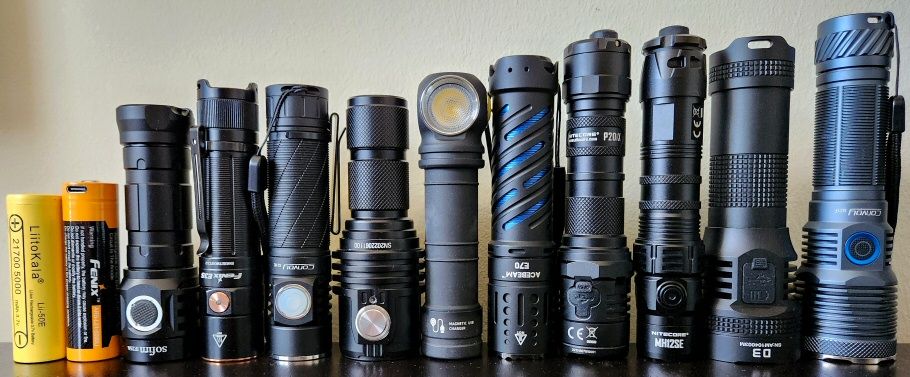
From left to right: LiitoKala 21700 (5000mAh), Fenix ARB-L21-5000U 21700 (5000mAh), Sofirm IF25A, Fenix E35 v3, Convoy S21E, Imalent MS03, Armytek Wizard C2 Pro Max, Acebeam E70, Nitecore P20iX, Nitecore MH12SE, Lumintop D3, Convoy M21F.
The E35 v3 is among the most compact of the 1×21700 battery class of flashlights I’ve seen. The extra width of the 21700 cell (over standard 18650) is barely noticeable, and the light fits well in the hand.
The side switch is in a convenient location for traditional flashlight carry, as your thumb rests naturally on the switch. Note there is no tailcap switch, so there is no easy option to carry the light in overhand tactical stance (i.e., you would need to use your little finger on the switch if you did).
The light lacks traditional knurling, and has instead a series of fine concentric rings (which I have sometimes seen referred to as “reeling” instead of knurling). Frankly, I find these rather slippery here – I’ve definitely come across more substantial implementations of this design.
The pocket clip helps with grip, so I recommend you leave it attached (as there are few other protruding design elements). The pocket clip seems designed for downward carry, but you could in a pinch try to mount the light between the clip and body so that it is pointing upward instead. The clip is not physically reversible on the light.
Tailstanding is stable, and there are cut-outs along the raised side ridges for lanyard use.
Hard anodizing looks to be good quality (as is typical for Fenix), and is more on the glossy side than typical (I personally prefer more matte). Threads are anodized, so you can lock out the light by a twist of the head.
The power switch has a metal cover, with a clear centre to allow the integrated battery status LED to shine through (see User Interface below). Switch feel is decent for this style of light.
The light lacks a USB-C charging port on the body, but there is one built into the bundled battery. Given the extra length of these batteries, you’ll have to stick with ones that include such a port (and a pronounced button, as required in this case by the reverse polarity feature). Since the Fenix battery is quite long, I think you will find that few other brands will fit and work in the light (i.e., none of the other ones with integrated USB-C chargers that I have tried would work).
The light apparently uses a Luminus SST70 LED – but not that you can easily tell, as the TIR optic obscures a clear view of the emitter die. I’m not generally a fan of TIR optics, but this one does an excellent job – a great balance of throw and wide spill, with no real colour distortions over the beam profile. Scroll down to see my beamshots below. That said, the lower output modes do have a noticeable green tint. This is not uncommon on Fenix lights, as constant-current drivers tend to produce more of a green hue at lower drive settings.
The bezel has a copper-colour ring that is completely flat (i.e., no crenelations). So if you lay the light down on its head on a flat surface, you may not be able to easily tell if it is on.
There is a reverse polarity feature in the head, so only true button-top cells will work in the light. I tried a few other 21700 cells, and none would activate the light.
Overall, I find this to be a good looking light with decent ergonomics and a great beam pattern. It fits well in the hand, but is a bit slipperier than I would like. A nice build in the compact 1×21700 EDC class.
User Interface
The E35 v3 uses a single side-mounted switch to control the flashlight. Available constant output modes, as per the manufacturer labels, are: Eco, Low, Medium, High, Turbo. There is one blinking mode outside the main sequence: Strobe.
From OFF:
- Press and hold 0.5 sec: Turns ON (constant output)
- Press and hold 2 sec: Strobe
- Single click: Battery status
- Double click: Lockout
- Triple click: n/a
From ON:
- Press and hold 0.5 sec: Turns OFF
- Press and hold 2 sec: Strobe
- Single click: Cycle through Eco to Turbo, in repeating sequence
- Double click: n/a (it just cycles through the constant output modes)
Mode memory:
Yes.
Low battery warning:
Yes. The indicator LED under the switch will show the remaining power as follows; Solid Green (85-100%), Flashing Green (50-85%), Solid Red (25-50%), Flashing Red (1-25%). It is bright without being obtrusive.
Reviewer Comments:
I really don’t like this interface. I find clicking to advance modes to be counter-intuitive, and I kept advancing to the level every time I tried to turn the light off during my testing. I can normally live with press-hold for on (although prefer single click). But in this case it was ruined by putting strobe as the extended press-hold. So, if you hold the button down for a fraction of a second too long (when either trying to turn on or off), you wind up strobing yourself (which again happened to me repeatedly in my testing)!
Personally, I find this the worse of all possible worlds. I suppose if this is the only flashlight you own, you will get used to it eventually. But having handled an insanely high number of flashlights over the years, I find this sort of non-traditional pairing very annoying (especially for the strobe placement).
I am also sad to see the lack of a true moonlight mode (see Testing Results for more info). This is a real shame, reducing the usefulness of this light as an EDC.
Circuit Measures
Pulse-Width Modulation (PWM):
There is no sign of PWM or circuit noise at any level. The light appears to be fully constant-current controlled. 🙂
Strobe:
Strobe alternates between two defined frequencies every second or so, measured as 14.7 Hz and 6.0 Hz in my testing. Certainly very disorienting!
Charging:
The Fenix 21700 battery shows an initial low USB-C charging current of 0.12A when the cell is heavily depleted (<3.0V resting), which jumps up to 1.25A once the cell is >3.0V resting. This is a good design, and indicates a safe and reasonably rapid integrated charging circuit.
Standby / Parasitic Drain:
I measured the standby current as 35.5 uA.
This is negligible and not a concern for long-term battery life, but I always suggest you lock the light out when not in use to prevent accidental activation. A single twist of the head will lock out this light, thanks to the anodized screw threads.
Emitter Measures
This section is a new feature of my reviews, where I directly measure key emitter characteristics in terms of colour temperature, tint, and colour rendition. Please see my Emitter Measures page to learn more about what these terms mean, and how I am measuring them.
As explained on that page, since I am using an inexpensive uncalibrated device, you can only make relative comparisons across my reviews (i.e., don’t take these numbers as absolutely accurate values, but as relatively consistent across lights in my testing).
_cQKtu2xV5T7rAdbR7Z64qB.jpg)
_jStBb7ZQdBqLosCPJCfJqe.jpg)
The key measures above are the colour temperature of ~5160K, and the very noticeable positive tint shift (+0.0199 Duv) to green-yellow at this temperature.
For CRI (Ra), I measured a combined score of 61.
These results are consistent with high output Luminus SST emitters, and match my visual experience of this light.
Beamshots
All outdoor beamshots are taken on my Canon PowerShot S5 IS at f/2.7, 0.5 secs exposure, ISO 400, daylight white balance. The bend in the road is approximately 40 meters (~45 yards) from the camera. Learn more about my outdoor beamshots here (scroll down for the floody light position used in this review).
Click on any thumbnail image below to open a full size image in a new window. You can then easily compare beams by switching between tabs.
Testing Results
My summary tables are generally reported in a manner consistent with the ANSI FL-1 standard for flashlight testing. In addition to the links above, please see my output measures page for more background.
All my output numbers are based on my home-made lightbox setup. As explained on that methodology page, I have devised a method for converting my lightbox relative output values to estimated lumens. My Peak Intensity/Beam Distance are directly measured with a NIST-certified Extech EA31 lightmeter.
Fenix E35 Testing Results
| Mode | Spec Lumens | Estimated Lumens @0sec | Estimated Lumens @30 secs | Beam Intensity @0sec | Beam Intensity @30secs | Beam Distance @30secs | PWM/Strobe Freq | Noise Freq | Charging Current <3V | Charging Current >3V | Parasitic Drain | Weight w/o Battery | Weight with Battery |
|---|---|---|---|---|---|---|---|---|---|---|---|---|---|
| Eco | 50 | 69 | 69 | - | - | - | No | No | 0.12 A | 1.25 A | 35.5 uA | 68 g | 141 g |
| Low | 150 | 200 | 200 | - | - | - | No | No | 0.12 A | 1.25 A | 35.5 uA | 68 g | 141 g |
| Med | 450 | 530 | 530 | - | - | - | No | No | 0.12 A | 1.25 A | 35.5 uA | 68 g | 141 g |
| Hi | 1,200 | 1,400 | 1,350 | - | - | - | No | No | 0.12 A | 1.25 A | 35.5 uA | 68 g | 141 g |
| Turbo | 3,000 | 3,000 | 2,900 | 15,150 cd | 13,710 cd | 234 m | No | No | 0.12 A | 1.25 A | 35.5 uA | 68 g | 141 g |
| Strobe | 3,000 | - | - | - | - | - | 14.7 Hz / 6.0 Hz | No | 0.12 A | 1.25 A | 35.5 uA | 68 g | 141 g |
To see full testing results for all modern lights in my testing, check out my Database page.
Runtimes
As always, my runtimes are done under a small cooling fan, for safety and consistency. To learn more about how to interpret runtime graphs, see my runtimes methodology page.
As you can see above, the E35 is extremely efficient at all levels tested, consistent with a good current-controlled circuit.
I know the runtime pattern looks rather “noisy” on Turbo, but this is not actually visible to the naked eye. To illustrate, here are the max output runtimes blown-up to show the first 8 minutes:
And now, an even greater blow-up of 2 mins in the middle of the run:
The gradual rise, and somewhat faster fall, in output are not visible to the naked eye as they happen over quite a few seconds. For all intents and purposes, the output appears completely stable in actual use.
Pros and Cons
| Pros | Cons |
|---|---|
| Outstanding current-controlled efficiency | No Moonlight mode |
| Excellent balanced beam profile | Poorly thought out user interface, easy to strobe yourself when turning on/off |
| Good thermal management allowing for reasonably high output levels | Somewhat slippery design |
| Very compact light | |
| Included high-capacity battery with fast built-in charge rate |
An additional neutral comment (i.e., not necessarily good or bad) is that only true button-top cells will work in the light. This is due to the reverse polarity protection feature.
Overall Rating

Preliminary Conclusions
I was really expecting to be able to award this light a higher rating when it first arrived. Fenix’s current-controlled circuitry has always had top-notch efficiency, with some of the best runtimes in the business (which is true here too). Although the lack of a moonlight mode was always going to bring it down from top status though – this is a fatal flaw in an EDC light, in my opinion.
I can handle the minor annoyances I found in testing (like the slippery finish), given all its other positive (e.g., its compact size and lovely beam). But the user interface is just bonkers to me. Who makes you long-press to turn on or off, but then makes strobe a slightly longer press? This is a recipe to strobe yourself when turning on or off (which I did repeatedly). Also not a fan of click to advance modes (i.e., easy to forget, so you wind up jumping to a higher level when you meant to turn off). Sorry, but this lack of forethought turns what is an otherwise top quality package into one that is just above average overall.
But it is all relative in the end. If you the user interface makes sense to you, or you figure you can get used to it, this light does have a lot to offer. The relatively high (and well-managed) output levels, the excellent runtime efficiency, and great beam pattern make it a serious contender in the the ultra-compact 1×21700 class of flashlights.
Reviewer’s Note: Between the time of my purchase and this review, Fenix has released a slightly updated version known as the E35R. But this has very minor tweaks – a tiny bump in max output to 3,100 lumens, inclusion of a USB-C charger on the light itself instead of the battery, slight body change with magnetic tail, and minor UI tweak for lockout. I doubt performance would be meaningfully different to what is described here, and none of the changes affect my conclusions about handling or the interface.
Acknowledgement
I personally purchased this light from a local dealer. This review has not been sponsored in any way. At the time of review, this light retails for ~$75 USD (~$105 CDN).


_20230319_135511_x9MXRSAGmc9UyrYyamGyKe.png?width=1920&height=1080&fit=bounds)
_20230319_141950.png?width=1920&height=1080&fit=bounds)
_20230319_135532.png?width=1920&height=1080&fit=bounds)
_20230319_135617.png?width=1920&height=1080&fit=bounds)
_20230319_135629.png?width=1920&height=1080&fit=bounds)
_20230319_135749.png?width=1920&height=1080&fit=bounds)
_20230319_135645.png?width=1920&height=1080&fit=bounds)
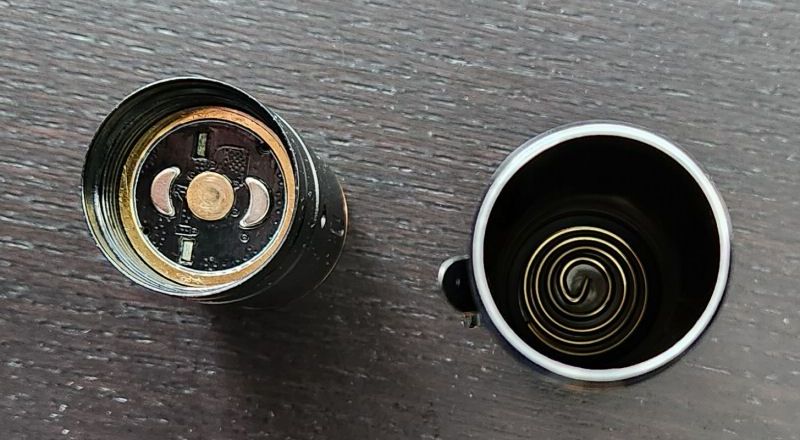
_20230319_135847.png?width=1920&height=1080&fit=bounds)
_20230319_135911.png?width=1920&height=1080&fit=bounds)
_20230319_135859.png?width=1920&height=1080&fit=bounds)
_20230319_135658.png?width=1920&height=1080&fit=bounds)
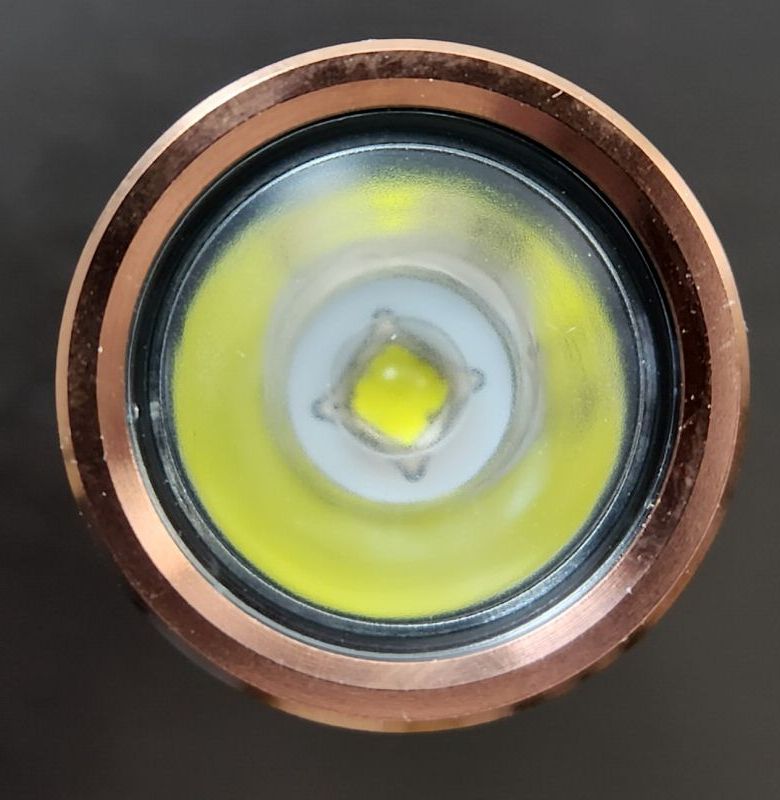
_20230319_140046.png?width=1920&height=1080&fit=bounds)
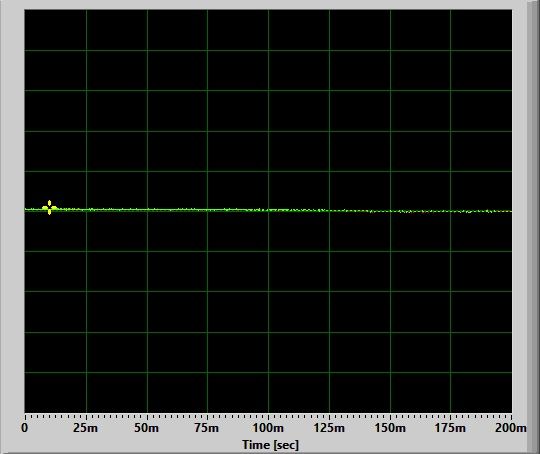
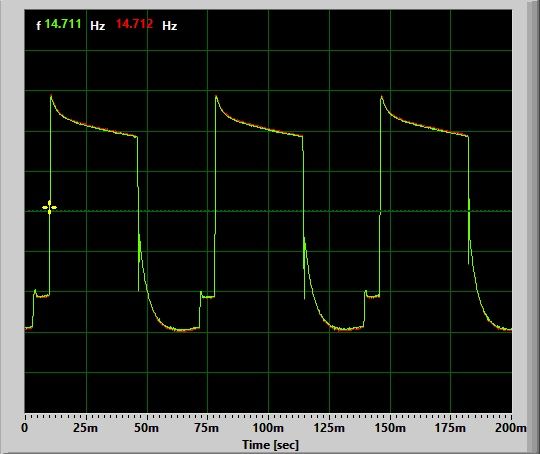
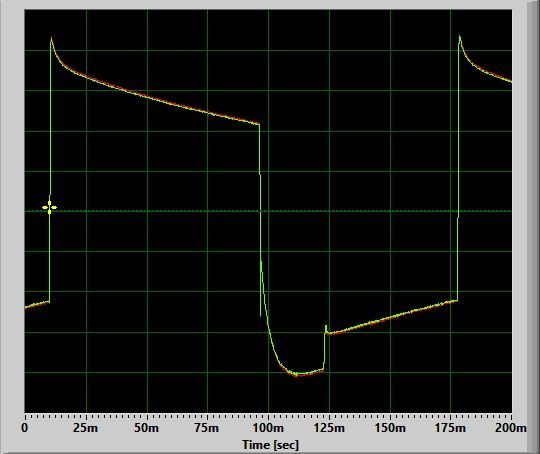
_20230319_135942.png?width=1920&height=1080&fit=bounds)
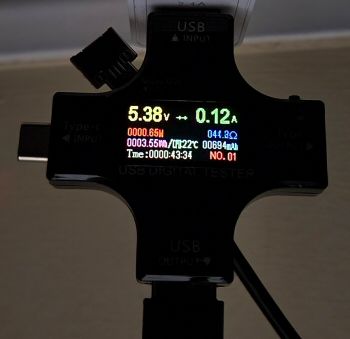
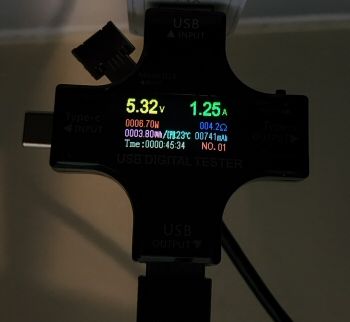
.JPG)
.JPG)
.JPG)
.JPG)
.JPG)
.JPG)
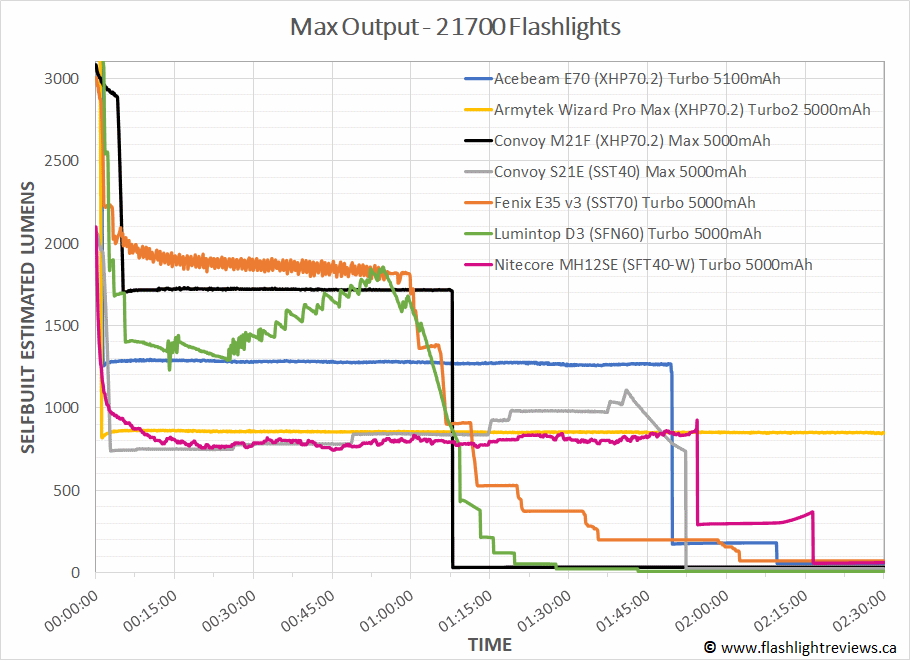
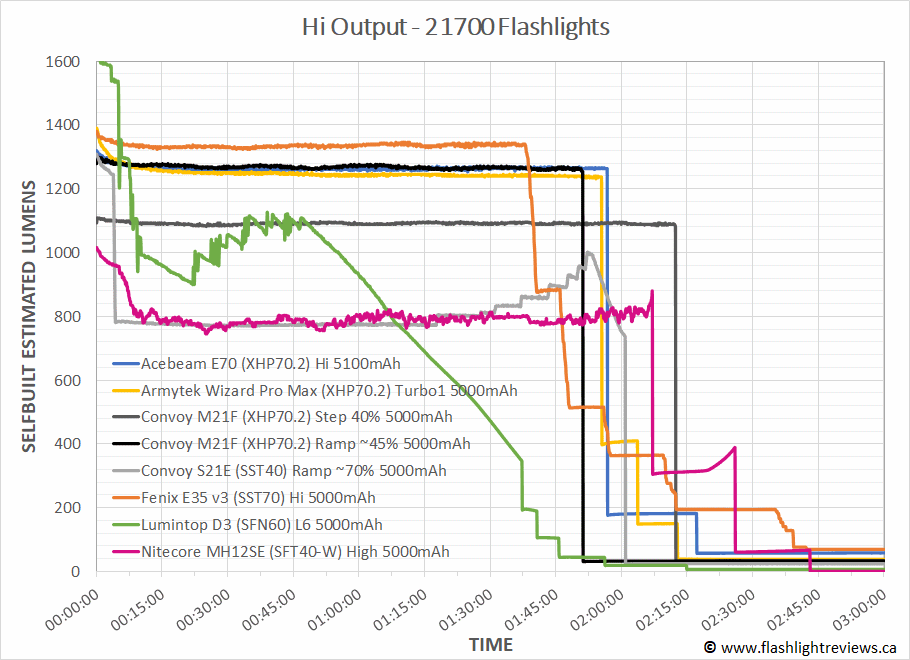
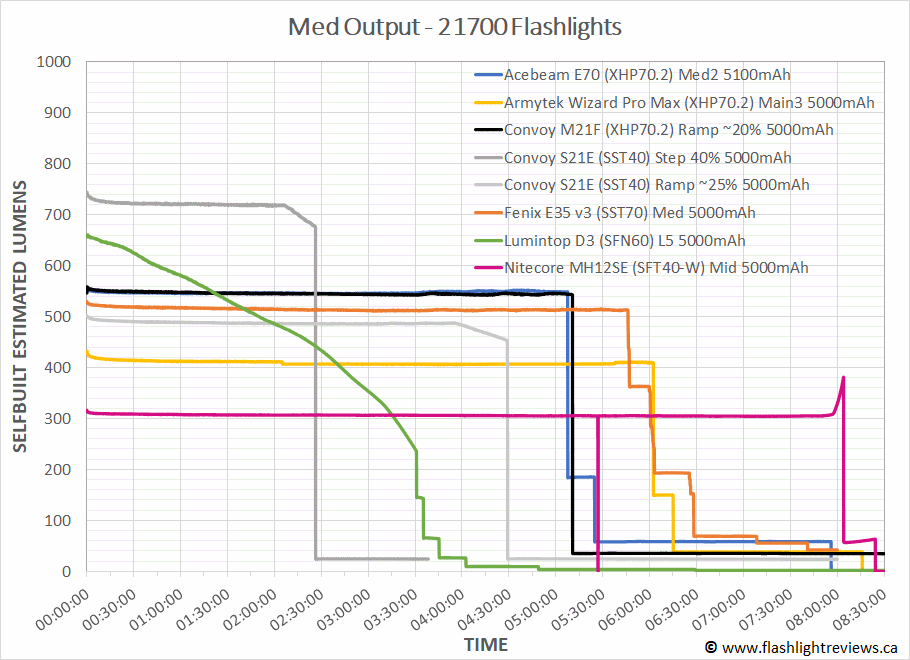
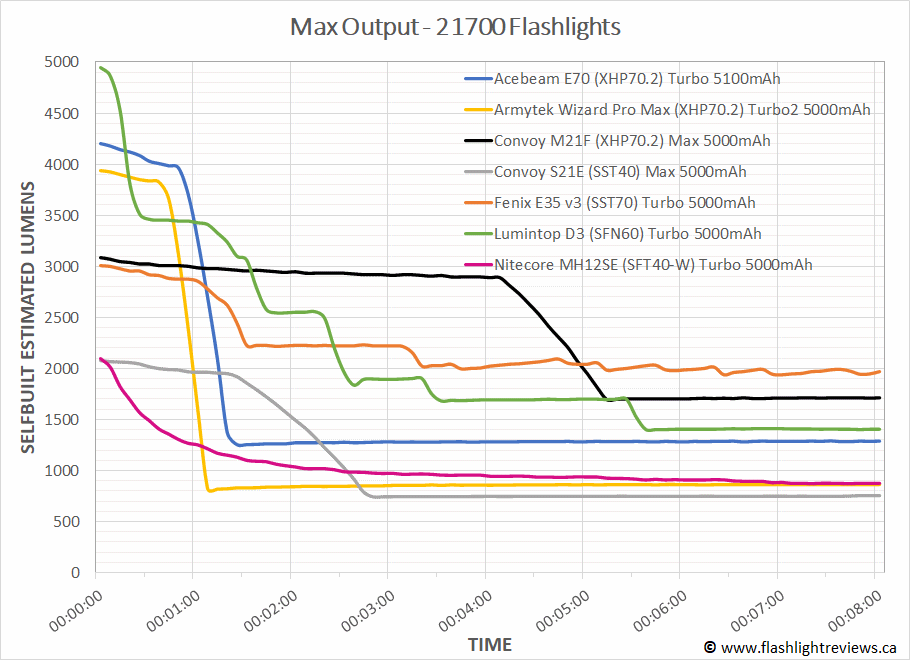
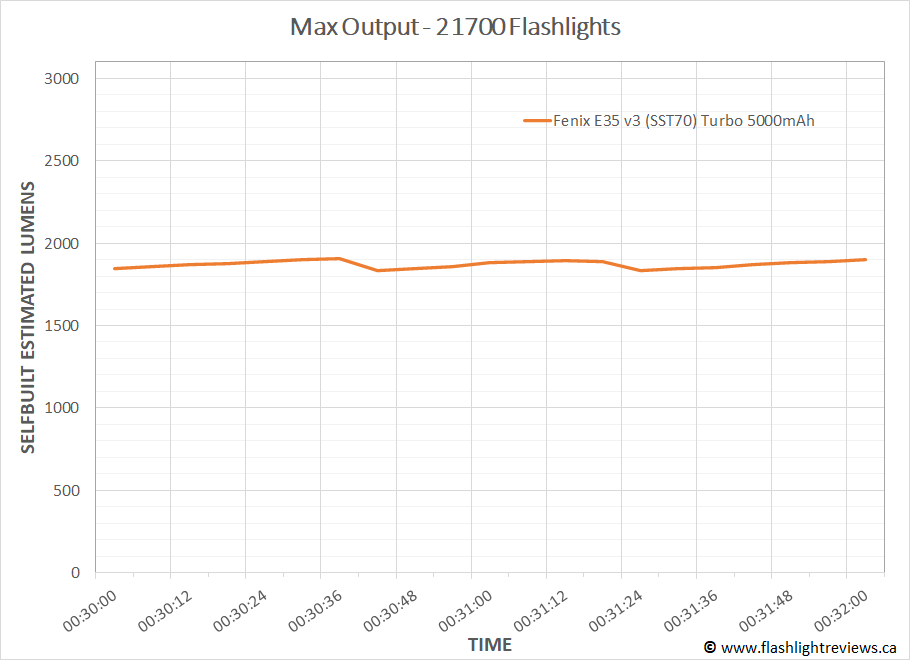

 Or put another way, why I have come back to flashlight testing? That question has a number of facets as well, which I think I’ll save for the
Or put another way, why I have come back to flashlight testing? That question has a number of facets as well, which I think I’ll save for the